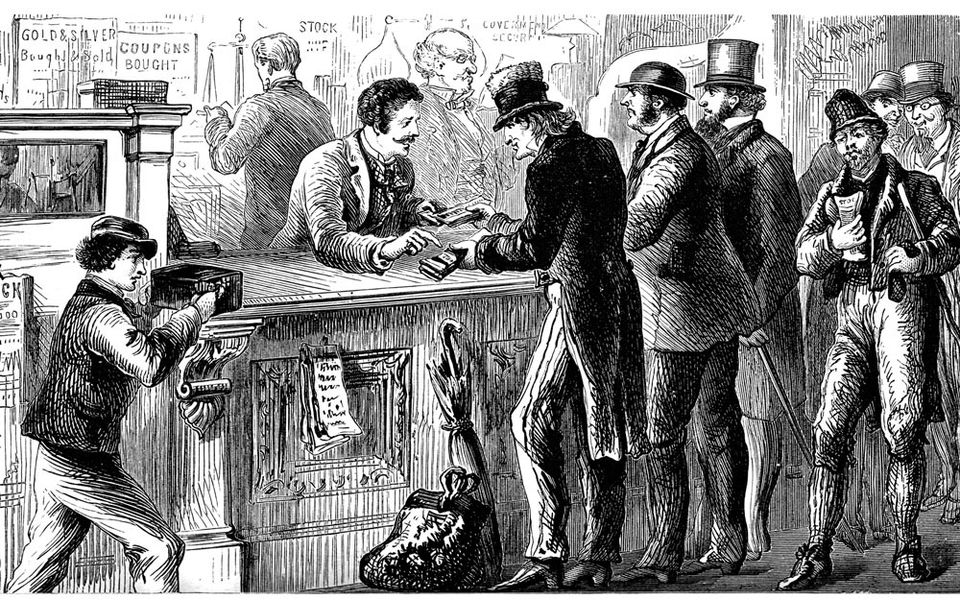
FROM THE BLEACHERS, VOL. 6
MARKET UPDATE
The S&P 500 spent Tuesday and Wednesday testing the 200-day moving average at 2742 before backing off on Thursday. The index finished up marginally on the week, rising by just 0.05%. The next few weeks should be interesting as traders decide whether to continue pushing stocks higher in an attempt to breach the 200-day moving average or decide it’s time to start taking profits from the seven-week-old rally. Notably, bond yields have continued to fall, signaling that bond investors aren’t buying into the “economic fundamentals are fine” narrative. Instead, bond investors are pricing in slower economic growth. The 10-year Treasury yield has fallen to 2.64% while the 6-month Treasury is yielding 2.50%, leaving a spread of only .14% between the two maturities. Translation: bond investors don’t see inflation on the horizon, which also means they aren’t expecting strong economic growth anytime soon. Furthermore, a flat yield curve makes it hard for banks to make money on their basic business of borrowing short and lending long. A narrower spread means less profitable lending. Banks typically respond by doing less lending, which ultimately reduces economic growth even further.
Meanwhile, economic reports from around the world are lending credence to the bond markets point of view. According to Barron's, there is nearly $9 trillion in negative yielding debt worldwide - a number that has risen sharply since last year. For those of you who don’t follow fixed income that closely, until the financial crisis it was thought impossible for bond interest rates to be negative. After all, who would pay a bank to hold their money rather than having the bank pay them? Yet here we are, approximately ten years into an economic expansion in the U.S., and 10-year Treasuries are still only 2.64%, while German bunds yield all of 0.09% and Japanese 10-years are back below zero. Meanwhile, economic growth forecasts are falling in Europe, Asia – notably China, and the U.S. “The European Commission lowered its estimate of 2019 GDP growth for the eurozone by nearly a third, to 1.3% from 1.9%. Italy is already in recession, while German growth is faltering as its export-dependent economy is being hampered by a slowing China,” wrote Barron's recently.
Somebody is wrong. Either bond investors or stock investors are on the wrong side of the trade. Worth noting, bond investors tend to get it right more often than stock investors.
INVESTING
“What causes a bear market?” a client asked over coffee last week. “Bear markets are psychological events,” I replied, “which makes them unpredictable.” He wasn’t happy with that answer. For the next 15 minutes, we talked about sandpiles, avalanches, earthquakes, self-organized criticality, and bear markets. Self-organized criticality is nature’s tendency to move a complex system to a critical state where the potential exists for a sudden change to occur, but of unpredictable size. Perhaps the most famous study of self-organized criticality was the Abelian sandpile model, otherwise known as the Bak-Tang-Wiesenfeld model, introduced in 1987 by three physicists: Per Bak, Chao Tang, and Kurt Wiesenfeld. The model simulated dropping grains of sand on a grid, randomly, one at a time, until an avalanche occurred. What they discovered was that there was no way to predict which grain of sand would trigger an avalanche once the sandpile had reached a critical state, nor was there any way to predict the resulting size of the avalanche. A grain of sand, each identical to the next, might have no impact on the sandpile or it might trigger a massive avalanche that caused the entire pile to collapse. The stock market is not dissimilar to the sandpile.
The stock market is a complex system with millions of inputs daily. Markets drive themselves to self-organized criticality periodically, and then a catalyst triggers sufficient selling to attract additional selling, which in turn generates even more selling. Thus, a bear market is born. Investor psychology changes - instead of seeing dips as buying opportunities, they see rallies as selling opportunities. What catalysts trigger the psychological change in investors? Often the exact same grain of sand! Economic growth is slowing: Buy stocks because the Federal Reserve will stop raising rates. Economic growth is slowing: Sell stocks because earnings growth is slowing. Many grains of sand come and go without initiating that critical change in investor psychology until one catalyst does.
No one knows how to predict the beginning of a bear market because no one knows what catalyst will flip investors from buy to sell. Pundits offer up dozens of potential catalysts that end up as just another grain of sand on the pile. In fact, investors are so bad at predicting bear markets that we usually have no clue we’re even in one until it’s far along. We may even be in one right now.
Regards,
Christopher Norwood, CFA
Chief Investment Officer











